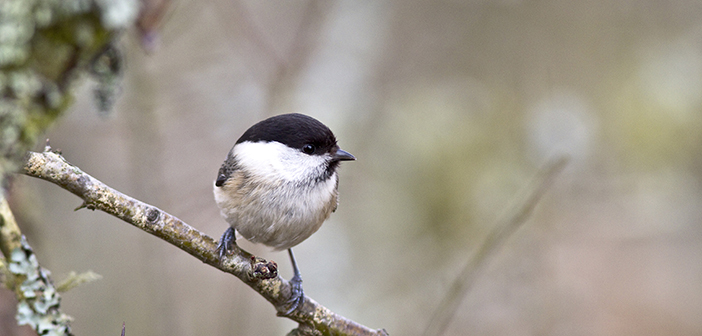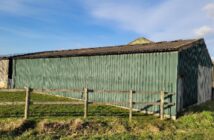A RESCUE plan to reverse the decline in the population of Willow Tits is being hatched across woodlands in the North West.
Willow tit numbers have dropped by more than 90 per cent in the UK in just over half a century – in their Greater Manchester stronghold, breeding pairs have decreased from 300 in 1984 to around 120 according to estimates.
Now The Wildlife Trust for Lancashire, Manchester and North Merseyside (LWT) and The Conservation Volunteers (TCV) are joining forces to help willow tits to recover.
The Wet Willow Wildlife project is funded by the Government’s Species Survival Fund. The fund was developed by Defra and its “arm’s-length bodies”. The project is being delivered by The National Lottery Heritage Fund in partnership with Natural England and the Environment Agency. The £25m Species Survival Fund recently announced 20 successful projects across the UK, with lapwings, water voles and dragonflies also in need of help.
The Wet Willow Wildlife project will gather data on the health of willow tits using volunteers, work with land owners to increase willow tit habitat and improve connectivity between areas where they live, benefitting a whole host of other creatures into the bargain.
Matt McMullen, Senior Nature Recovery Officer at LWT said: “Willow tit in our region like woodland that many people would see as scruffy, with impenetrable brambles, rotting wood and wet ground. These damp areas provide the conditions for Willow Tit to dig nest holes, which they do every year. Making space for this unruly habitat is important to their survival and thriving in the region.
“It is important that their territories are connected. The undervalued habitat on which they rely can be lost too and become broken up through development, and if left can become too mature.
“We want to demonstrate the importance of the messy woodland on which willow tit and other special species rely. Though open woodland with ground flora such as bluebells, which we enjoy this time of year, is valuable, this habitat does not suit Willow Tit, whose decline we are hoping to address.”
More than 15 per cent of the UK’s willow tits are found in the North West, with Wigan being a central point with the network radiating out along river valleys. LWT and TCV will work with landowners/stakeholders like the Woodland Trust, Trafford Council and Mersey Gateway Environment Trust, as well as partners in the Great Manchester Wetlands. Willow tits are black, pale brown and white in colour. They have a pale panel on the wings and a sooty-black cap and bib. Theirs is a distinctive, nasal “zee, zee, zee” call, which is often the most reliable way to identify the bird.
The Wet Willow Wildlife project aims to boost the willow tit’s chances of survival but has many benefits for people getting involved in surveying and volunteering.
LWT Head of Landscape Nature Recovery Jo Kennedy said: “The Lancashire Wildlife Trust is delighted to be involved with this Species Survival Fund project which will make a major difference to the survival of multiple species that rely on wet willow woodland habitat, including the threatened willow tit.
“The project will help us to deliver our nature recovery aspirations and provide more people with the benefits of connecting with nature across the region.
“Working with our partner The Conservation Volunteers and local landowners, we’ll be engaging the public in an exciting programme of volunteering opportunities based around wildlife surveying and practical conservation skills as well as fun and interactive events.”
Ruth Crawford, Team Leader at TCV, said “‘TCV are excited to partner with Lancashire Wildlife Trust on this project to restore and connect important wet willow habitat for threatened wildlife species. The project will take a landscape scale approach to habitat connectivity and highlight the importance of scruffy and damp wet woodlands for species like willow tits. There will be lots of opportunities for people to connect with nature, including citizen science volunteers who will help us map species connectivity across the landscape.’
The key outputs of the project will be connecting willow tit habitats, eventually allowing these areas to be created naturally. They do tend to be messy, damp and unruly but they are great places for willows tits and other creatures to find food and protection from predators. Other species like poplar hawk moth, small sallow mining bee (andrena praecox) and lesser redpoll also associate with this habitat and will benefit, some of which will be monitored during the project.
During the launch of the Species Survival Fund, Environment Minister, Rebecca Pow, said: “The funding awarded today as part of our flagship Species Survival Fund will enable local authorities, landowners, farmers, and our protected landscapes organisations to restore nature at scale and provide valuable green jobs in the process.
“Only by creating bigger and better habitats for wildlife will we be able to halt the alarming decline in species loss. This fund will be a key plank in achieving our legally binding targets to halt species loss and protect 30% land for nature by 2030.”
Eilish McGuinness, Chief Executive at The National Lottery Heritage Fund, said: “We are delighted to be working in partnership with Defra again to distribute funding for these projects, which will support nature recovery by helping to boost the quality and quantity of wildlife-rich habitats across England. This partnership will further our vision for heritage to be valued, cared for and sustained for everyone, now and in the future.”
For more details of the Wet Willow Wildlife project, go to www.lancswt.org.uk




